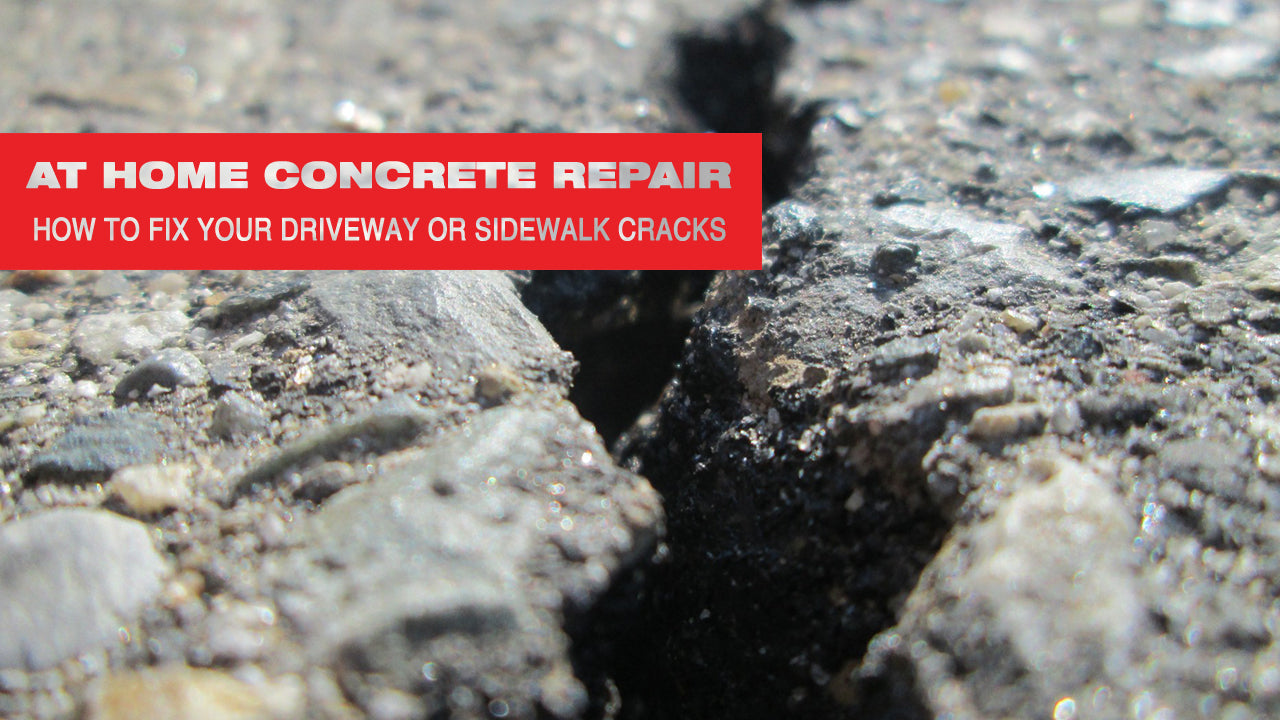Does your sidewalk, that leads to your front porch or driveway, have cracks or uneven surfaces? If so, in many cases this can be fixed using two techniques.
To get an understanding of your concrete, the man-made lines or joints you see in concrete sidewalks and driveways are known as relief cracks. When a concrete mason pours a concrete slab, usually several hours after curing, he will use an early entry saw to cut relief cracks in the concrete. The purpose of these relief cracks is to isolate the concrete structure and prevent them from inevitable shifting and damage. With that said, the relief cracks in your side walk may not have worked properly or maybe their time has come to and end. Concrete integrity becomes compromised from harsh winters where concrete is constantly shrinking and expanding. Additionally, if the concrete slab was not properly compacted, using a plate compactor, before pouring the concrete, erosion from rain or weed growth can make the concrete slab move causing more cracks.
Technique 1: Isolation Joints
The first techniques is to repairing these cracks is to check if the isolation joint is damaged. When the concrete contractor poured the slab sometimes he will use an isolation joint which looks like a rubber epoxy material between the driveway and the sidewalk. If this is where the damage lies, you can easily fix this by removing the old isolation joint with a screwdriver. Make sure to get all debris out with a chisel, garden hoses or blower. Then uses a polyurethane sealant to refill the crack to a level that fills the gap in the concrete. Check out your local construction supply store or cement section in Home Depot.
Technique 2: Concrete Scarifier
Are there several areas that have uneven surfaces where trees or plants have uprooted the concrete? In this scenario consider using a gas powered scarifier, which is basically a concrete grinder built for this exact purpose. A scarifier works quickly and grinds down concrete to an even level. For sidewalks and concrete driveways use a scarifier with tungsten carbide tipped teeth, which last longer than standard steel cutters. Although a little on the pricey side you can rent or purchase a scarifier for a fraction of what it would cost to tear out and re-pour a concrete driveway or sidewalk.
If a particular section is beyond repair. Before replacing the whole driveway, consider working with a local contractor to do a sectional repair. You can sometimes do small demo projects and rebond concrete with a smaller pour.
Today there are a lot of options for repairing your driveways and sidewalks, so do your research and consider other options before replacing everything and spending big dollars











4 comments
Concrete Pros Bend
Great post! Fixing driveway or sidewalk cracks at home is easy—just clean the crack, apply a concrete filler or sealant, smooth it out, and let it cure. A quick repair that helps prevent bigger issues down the road!
Concrete Pros Bend
Great post! For at-home concrete repair, clean the cracks thoroughly, use a concrete patch or filler, smooth it out, and let it cure. It’s a simple way to keep your driveway or sidewalk looking great and safe!
Thomas Clarence
You made an interesting point when you explained that it is a good idea to do some research so that you can find the right option for repairing your driveway. I would think that it would be a good idea to hire a contractor to repair your concrete. Hiring a contractor seems like the best way to make sure that the concrete repairs last a long time. https://www.masterlinkpumping.com/residential-concrete-pumping
Sam Gibson
Thanks for explaining that a scarifier is a gas-powered tool that is designed to grind concrete to make it a smooth surface after lifting has occurred. My brother has a lot of cracks and lifting in his driveway that he’s hoping to have removed so he can put in a new driveway. He’s hoping to find a reputable facility that can sell him quality parts and materials to make sure it lasts a long time. https://www.barrymedewbuildingsupplies.com.au